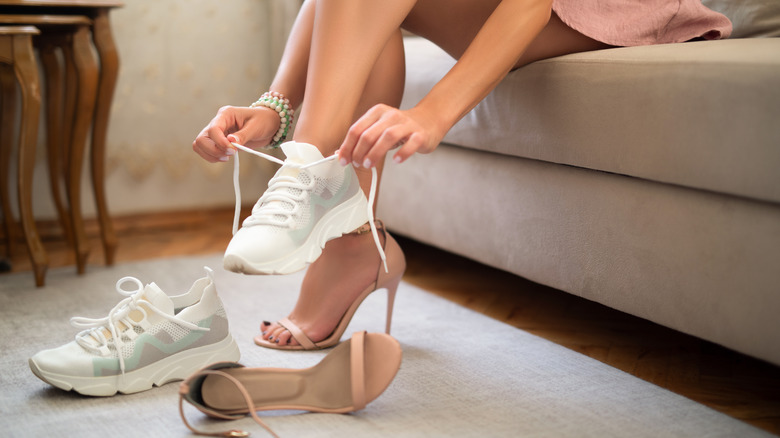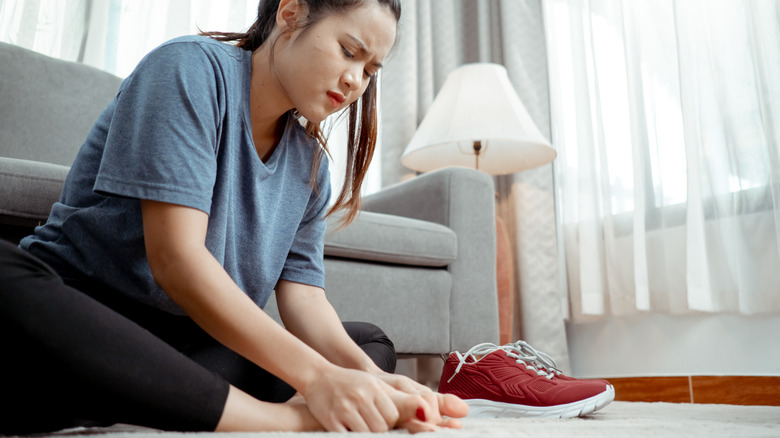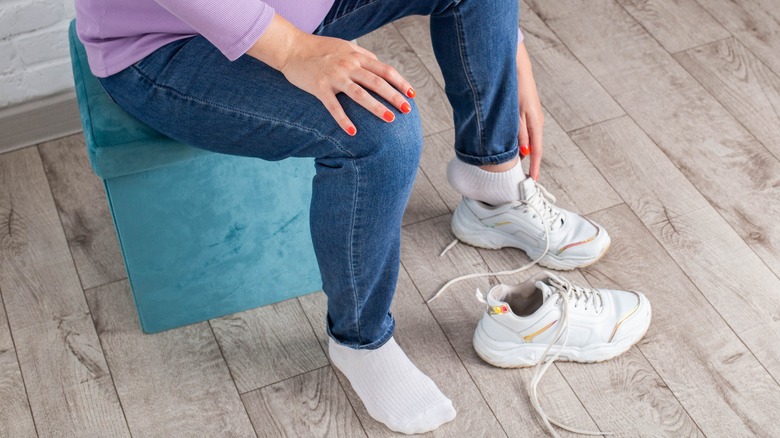Here's What Happens If You Stop Wearing Socks With Shoes
If you're someone who finds socks to be itchy, constricting, or just all-around uncomfortable, you may prefer to go sock-free. While it's understandable, socks actually play an important role in our health. Socks act as a protective barrier against the development of blisters and other kinds of skin damage on our feet. They also help regulate temperature and sweating. Furthermore, socks also help keep our feet warm and cozy during the colder months of the year, which minimizes the risk of frostbite. With that in mind, is there any harm in living a barefoot lifestyle (inside our shoes)?
Some consequences of wearing shoes without socks are milder than others. As previously mentioned, you're likely upping your chances for blisters. In addition, you may also find that your feet develop a less-than-desirable aroma. According to experts at Feet First Clinic, our feet can produce more than 1 cup of sweat daily. While socks can help absorb this moisture, going sock-free means that this sweat remains on our feet, creating an optimal environment for bacterial growth and subsequent odor.
You're more susceptible to infection
If you stop wearing socks with your shoes, you'd likely have an unpleasant odor and some bothersome blisters. But you'd also increase your risk for certain infections — particularly athlete's foot. Spread easily, this fungal infection can prompt incessant burning and itching on the feet. According to research published in InformedHealth.org, as much as 15% of the population is thought to have athlete's foot. Because this fungus thrives in warm, damp places, going barefoot in communal spaces like public pools and gym locker rooms can make one more susceptible to infection. Similarly, it's important to wear moisture-absorbing socks with our shoes in order to keep our feet nice and dry.
To help reduce your chances of contracting athlete's foot, remember to practice proper foot hygiene and regularly wash your feet with antibacterial soap and water. Additionally, opt for shoes that allow for air exposure. Wearing flip-flops in damp communal spaces is particularly important. Lastly, in addition to routinely disinfecting your shoes, be sure to be vigilant about washing your socks. The hotter the water, the better.
Best practices for wearing socks with shoes
Now that we've learned just how important socks are to our health, let's make sure we're picking the best-quality socks we can — without breaking the bank. After all, not just any pair of socks will do. Rather, you'll want to keep an eye out for socks made with moisture-absorbing, natural materials. Experts at Feet First Clinic suggest sticking with cotton, merino wool, or bamboo, as these materials allow for optimal ventilation.
Don't neglect fit either. You'll want a pair of socks that fit just right over both your foot and ankle. Socks that hang too loosely around the foot may lead to blisters. Last, be mindful of temperature and ensure the environment inside your shoes isn't too hot or too cold. This means that the thickness of your socks may need to change year-round. During the summer months, reach for a lighter pair of socks. As the temperature drops throughout the year, swap these out for a thicker pair.


